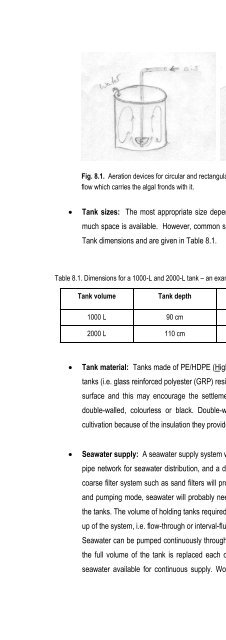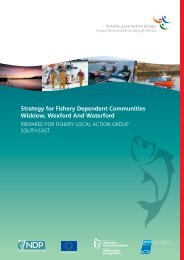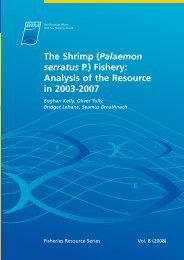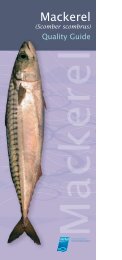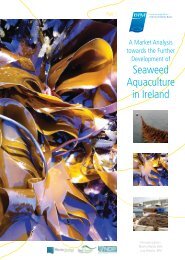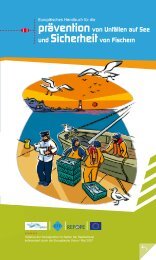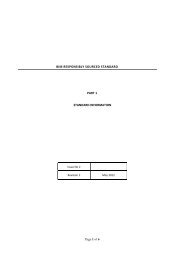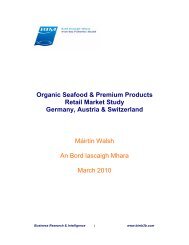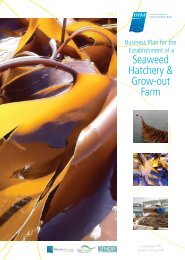Cultivating Palmaria palmata - Bord Iascaigh Mhara
Cultivating Palmaria palmata - Bord Iascaigh Mhara
Cultivating Palmaria palmata - Bord Iascaigh Mhara
You also want an ePaper? Increase the reach of your titles
YUMPU automatically turns print PDFs into web optimized ePapers that Google loves.
Fig. 8.1. Aeration devices for circular and rectangular tanks. The air bubbles create a circular water<br />
flow which carries the algal fronds with it.<br />
Tank sizes: The most appropriate size depends on how much biomass is to be produced and how<br />
much space is available. However, common sizes used for aquaculture are 1000-L and 2000-L tanks.<br />
Tank dimensions and are given in Table 8.1.<br />
Table 8.1. Dimensions for a 1000-L and 2000-L tank – an example.<br />
Tank volume Tank depth Tank diameter Tank surface area<br />
1000 L 90 cm 119 cm 1.112 m 2<br />
2000 L 110 cm 160 cm 2.01 m 2<br />
Tank material: Tanks made of PE/HDPE (High Density Polyethylene) are commonly used. Fibreglass<br />
tanks (i.e. glass reinforced polyester (GRP) resin tanks) can be used but may not provide a very smooth<br />
surface and this may encourage the settlement of fouling organisms. PE tanks can be single- or<br />
double-walled, colourless or black. Double-walled tanks may be particularly valuable for outdoor<br />
cultivation because of the insulation they provide.<br />
Seawater supply: A seawater supply system will usually comprise pumps, filter units, storage tank and<br />
pipe network for seawater distribution, and a drainage system. For the tank cultivation of seaweeds, a<br />
coarse filter system such as sand filters will probably be sufficient. Depending on the seawater access<br />
and pumping mode, seawater will probably need to be stored after filtering and before it is supplied to<br />
the tanks. The volume of holding tanks required depends on the volume used for cultivation and the set-<br />
up of the system, i.e. flow-through or interval-flushing.<br />
Seawater can be pumped continuously through the tanks. The turn-over rate (the number of times that<br />
the full volume of the tank is replaced each day) depends on the sizes of tanks and the amount of<br />
seawater available for continuous supply. Working with a continuous flow-through certainly involves<br />
49


